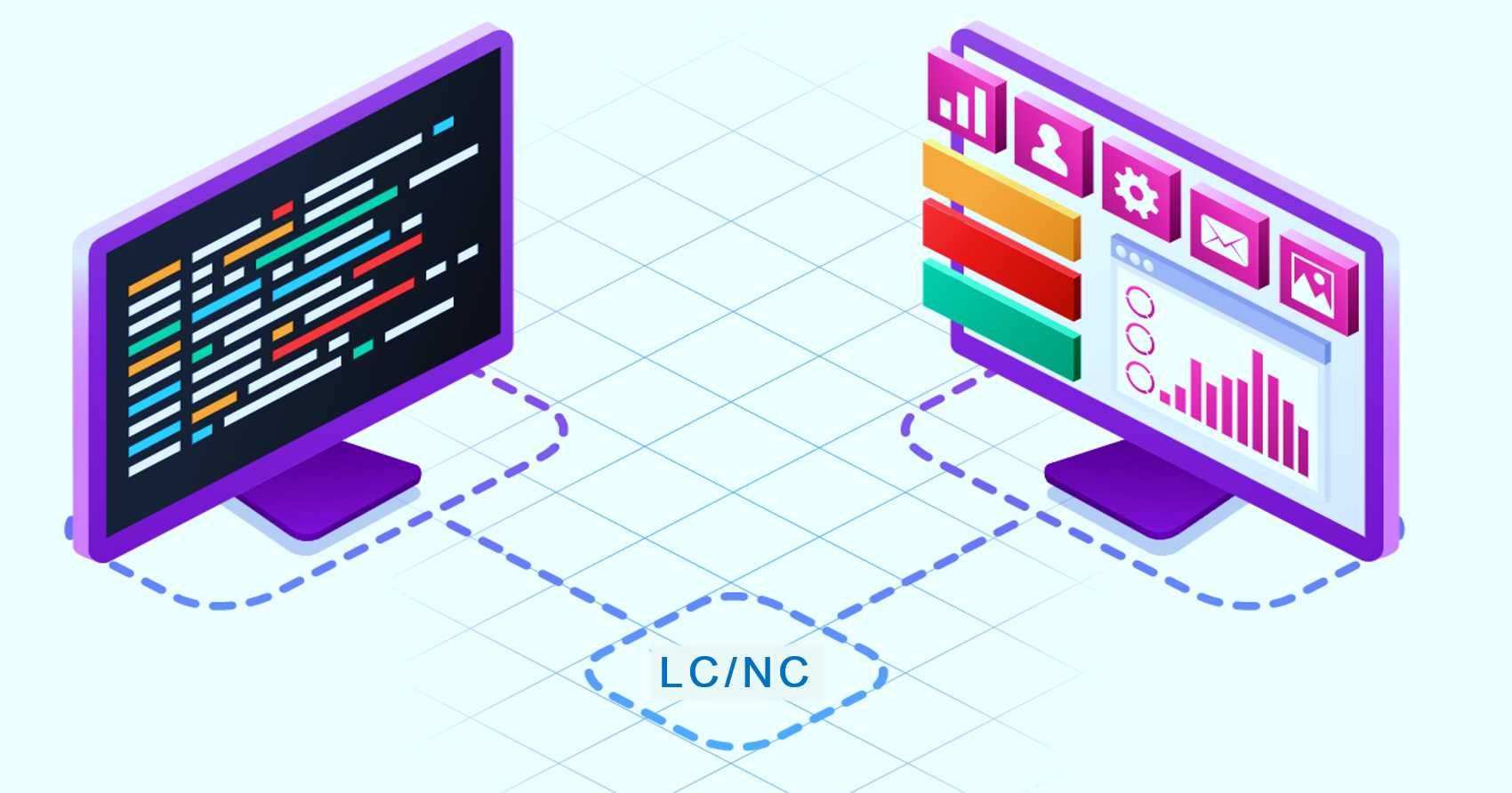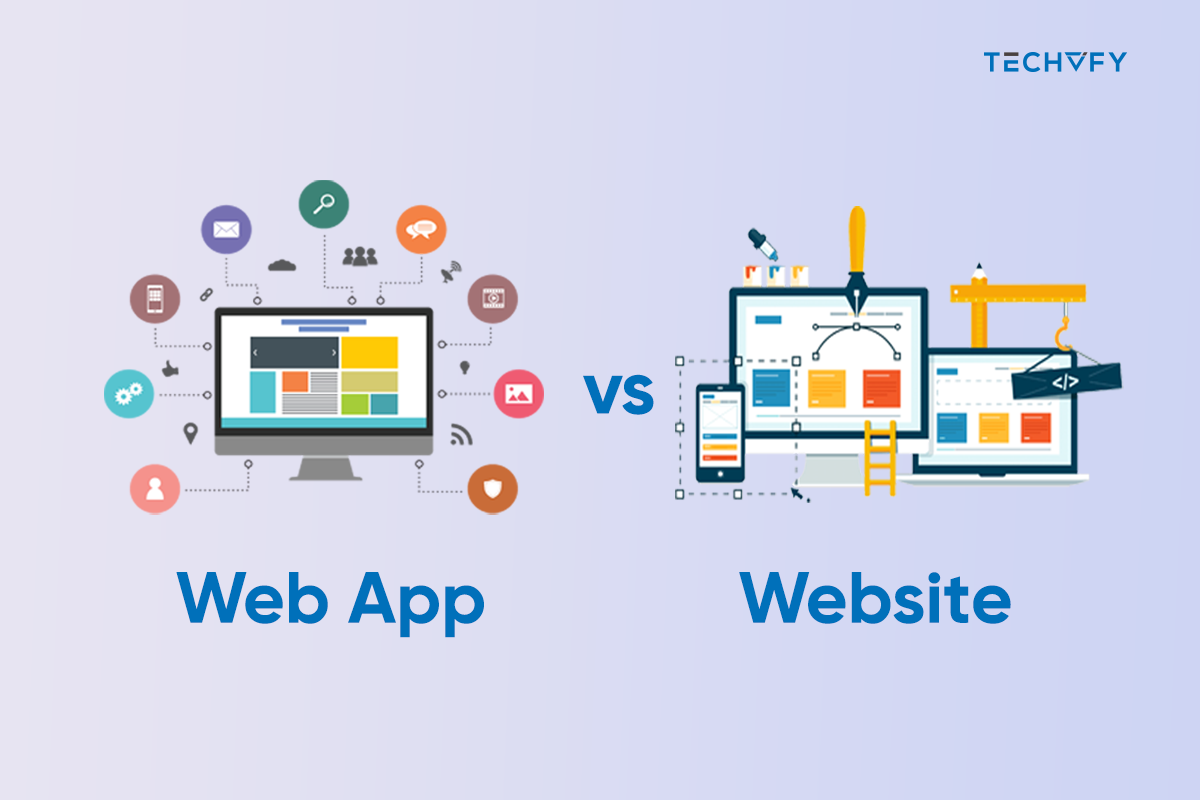Low-code and no-code platforms are vital for modern app development. They can cut app development time by almost 90 percent.
Both types bring efficiency and adaptability but in unique ways. It’s important to recognize these differences to shape IT strategies that support business objectives and advance IT progress.
This guide outlines the differences between low-code vs no-code platforms, explaining their key features, low code no code solutions, and limitations. With this information, tech leaders can make informed decisions, enabling their organizations to effectively use these platforms to drive innovation and meet strategic goals in today’s era.
I. Discover Low-code No-code meaning
1. What is Low-code?
Low-code development is an increasingly favored method over conventional software creation. It’s a technique that both professional and amateur, or “citizen,” developers can utilize to swiftly and efficiently construct applications of various complexities. Low-code solutions also cut down on the usual costs and time needed for software development, making them an attractive choice for businesses eager to embrace automation and speed up their digital transformation.
This approach to software development provides an easier, more user-friendly means for those without deep technical skills to create applications, minimizing the need for extensive programming.
For example, low-code software can be developed using straightforward interfaces and drag-and-drop functionalities, although a basic understanding of coding might still be required. These user-friendly, low-code tools enable developers with limited knowledge in software design or coding languages to develop a variaty of web and mobile applications.
Low-code solutions simplify the software development process, even for those who are not expert coders. Professional developers also gain from low-code platforms, as applications built on these platforms are quicker and simpler to develop, and they require less upkeep compared to applications built through traditional coding methods.
2. What is No-code?
There are various paths to transform an application from a basic idea to a fully operational product, and one often overlooked method is the no-code route. This approach empowers even those without programming skills to swiftly bring an idea to fruition, using limited time and resources. With no-code development, launching your web or mobile app to customers becomes a quicker process.
Put simply, no-code development enables anyone in your organization, regardless of their technical background or expertise, to create apps. These applications can smoothly blend with your current systems and workflows. The beauty of no-code app development is that it doesn’t require any coding knowledge, making it a perfect choice for companies aiming to utilize the skills of their non-technical employees for straightforward web and mobile app projects.
II. Benefits of using Low-code and No-code solution
Advantages of Low-code
Low-code development is rapidly becoming a crucial element in the business sector. Having delved into what low-code development platforms are and their prerequisites, it’s important to consider their key advantages.
Low-code platforms can significantly benefit your organization in the following ways:
- Time Efficiency: With low-code development, anyone in your organization can contribute, speeding up the process and reducing reliance on coding experts for app development.
- Enhanced Productivity for Developers: These platforms simplify app development, boosting team productivity. While developers might sacrifice some programming flexibility, the efficiency gained allows them to focus on more complex coding tasks.
- Cost Reduction: Low-code platforms enable businesses to cut costs by utilizing existing staff and citizen developers, rather than needing to hire new developers or outsource the work.
- Increased Flexibility: Regular maintenance, updates, and enhancements are easier with low-code platforms due to the reduced need for extensive coding. This flexibility allows other team members to assist if professional developers are unavailable.
- Bridging Talent Gaps: Low-code platforms are increasingly important as they enable non-technical staff to build apps, helping organizations bridge talent gaps by involving those without coding experience in web and mobile app development.
- Speeding Up Digital Transformation: To meet consumer and user demands, including the need for functional web and mobile apps, low-code development lightens the traditional app development load, aiding organizations in hastening their digital transformation.
Low-code platforms are not only beneficial for employees lacking technical app-building skills but are also valuable for teams with professional developers. By focusing on internal team development, building apps using low-code methods can save money compared to paying for outside programmers or buying services from other companies.
Advantages of No-code
- Accelerated Development Process: No-code platforms drastically reduce the time required to develop applications, enabling rapid transformation of ideas into functional apps.
- User-Friendly Design: With intuitive drag-and-drop interfaces, these platforms make app development accessible to individuals regardless of their coding expertise.
- Ease of Maintenance and Updates: No-code apps simplify the process of making updates and changes, allowing for quick adaptations to evolving business needs.
- Cost-Effectiveness: Adopting no-code development can significantly lower expenses by reducing the need for extensive professional development teams and software subscriptions.
- Enhanced Collaboration: No-code platforms facilitate teamwork and collective input in the app development process, even among those with limited technical knowledge.
- Democratization of Development: These platforms open up app development to a broader audience, empowering business users and others who lack traditional coding skills to create and innovate.
Learn More On:
III. How Do Low-Code and No-Code Tools Work?
Low-code and no-code tools are revolutionizing the way applications are developed, making the process faster, more accessible, and less reliant on complex coding. These tools work by abstracting the traditional coding process, enabling users to build applications through graphical user interfaces (GUIs) and simple logic.
Visual Development Environment
At the core of low-code and no-code platforms is a visual development environment. Users can drag and drop various components like forms, buttons, and data fields onto a canvas to design their application. This approach replaces the need to write extensive lines of code with a more intuitive, visual process.
Pre-Built Templates and Modules
These platforms come equipped with a library of pre-built templates and modules. Users can select from these ready-made elements to construct their applications, significantly speeding up the development process. These components are designed to be versatile and customizable, catering to a wide range of business needs.
Logic and Workflow Design
Low-code and no-code tools allow users to define the logic and workflows of their applications through simple, rule-based interfaces. Users can set up conditions, actions, and triggers that dictate how the application behaves, all without writing traditional code. This feature is particularly powerful for automating business processes and workflows.
Integration Capabilities
Low-code and no-code platforms excel in their capacity to seamlessly connect with current systems and databases. They often provide connectors or APIs that enable the new applications to communicate and work seamlessly with other software, thereby enhancing functionality and data consistency.
Collaboration and Accessibility
These tools make it easy for people to work together on the same project at the same time. They’re made to be easy to use for everyone, even those who don’t know much about programming, making it simpler for more people to get involved in developing apps.
Continuous Testing and Deployment
Low-code and no-code platforms typically include built-in testing tools that automatically check for errors and compatibility issues during the development process. They also facilitate easy deployment of applications, often with just a few clicks, and can be easily scaled as per the business requirements.
Empowering Citizen Developers
By simplifying the development process, low-code and no-code tools empower ‘citizen developers’ – individuals without extensive programming knowledge – to create and deploy applications. This empowerment leads to increased innovation and faster response to business needs.
IV. Difference between Low-code and No-code
| Aspect | Low-Code Platforms | No-Code Platforms |
| Target Users | Professional developers, IT staff | Business users, non-technical staff |
| Customization & Extensibility | High; allows for custom code, scripts, and complex logic. | Limited; relies on predefined templates and components. |
| Complexity of Use | Intermediate; some technical knowledge required. | Simple; designed for users without technical background. |
| Flexibility & Control | Greater flexibility in design and functionality; more control over the system | Less flexible; constrained to the platform’s capabilities. |
| Application Scope | Broad: from internal business applications to complex, customer-facing systems. | Narrower; mainly for simple internal or customer-facing applications |
| Integration Capabilities | Robust; supports complex integrations with various systems and APIs | Basic; limited to predefined integrations and simpler APIs. |
| Scalability | High; can scale with enterprise growth and complexity | Moderate; suitable for small to medium-sized businesses. |
| Security Features | Advanced; includes comprehensive security controls for enterprise-grade applications | Basic; adequate for simple applications but may need enhancements for complex needs. |
| Development Speed | Faster than traditional coding, but more involved than no-code | Very fast; prioritizes rapid development and deployment. |
| Cost Implications | Potentially higher due to advanced features and scalability | Generally lower, reflecting ease of use and limited complexity. |
| Code Visibility & Access | Partial to full code access, allowing for in-depth customization and troubleshooting | Limited to no code visibility; relies on the platform’s user interface. |
| Learning Curve | Moderate; requires understanding of programming concepts | Low; intuitive for users without programming experience. |
| Platform Dependency | Moderate; easier to migrate or integrate with other systems | Moderate; easier to migrate or integrate with other systems. |
| Maintenance & Upgrades | Requires ongoing maintenance, but offers more control over updates | Mostly handled by the platform provider, with less user control. |
| Data Handling & Processing | Capable of handling complex data structures and processing | Optimized for simpler data models and basic processing. |
V. Low-code vs No-code: When to use what.
No-code platforms are ideal for creating straightforward applications that streamline basic workflows without needing much customization. For instance, they can transform a spreadsheet report into a more user-friendly dashboard, enhancing employee productivity. Typical applications of no-code solutions include expense and vacation approvals, employee onboarding, calendaring, scheduling, and order management.
On the other hand, low-code platforms cater to a more diverse range of needs, especially in enterprise environments. They are designed for professional developers, offering greater flexibility than no-code solutions. These platforms enable the extension of built-in features like pre-designed patterns, screens, widgets, and application templates for more complex functionalities.
Additionally, they come equipped with advanced security and scalability, making them suitable for any enterprise scenario that would traditionally rely on conventional coding but without the added complexity. Common applications for low-code platforms include internal business applications, customer and partner portals, and core systems.
Both low-code and no-code platforms present distinct advantages, with no-code being optimal for simple, efficiency-driven tasks and low-code offering more extensive customization and scalability for complex enterprise needs.
Conclusion
The rise of low-code and no-code platforms marks a significant shift in software development, offering streamlined, efficient ways to build applications. Low-code is ideal for more complex projects requiring some coding, while no-code suits those without coding skills for simpler tasks. Both approaches accelerate digital transformation and enhance productivity.
Choosing between low-code vs no-code depends on your project’s complexity and the technical expertise of your team. If you’re weighing these options and need expert advice, TECHVIFY is here to help. Our team of experts can guide you in choosing the right platform for your needs, ensuring you make the most of these innovative technologies. Contact TECHVIFY for expert assistance and elevate your business with the right development tools.
TECHVIFY – Global AI & Software Solution Company
From Startups to Industry Leaders: TECHVIFY prioritizes results, not just deliverables. Accelerate your time to market and see ROI early with high-performing teams, AI (including GenAI) Software Solutions, and ODC (Offshore Development Center) services.
- Email: [email protected]
- Phone: (+84)24.77762.666








